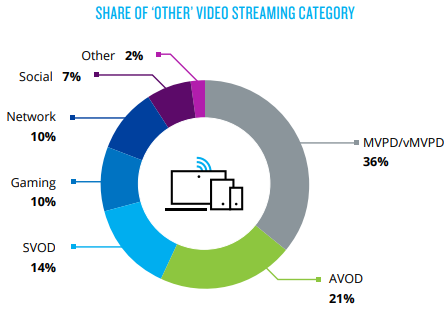LAFAYETTE, CA — While advertisers are bracing for the end of third-party cookies and mobile device identifiers to track online audiences, providers of over-the-top video services have functioned in a cookieless environment for years. Instead, they have developed first-party data about viewers, and enriched the information with third-party sources.
“As an OTT company, we have been working to solve the unique difficulties of identity in that environment for the past five years,” said Mark Rotblat, chief revenue officer of Tubi, the ad-supported streaming service owned by Fox Corp., in this interview with Beet.TV. “It’s connected television, and OTT is cookieless.”
Tubi has seen significant growth this year as the coronavirus pandemic has led people to spend more time at home, binge-watching video content. Because Tubi carries advertising, it’s free to consumers who may be maxing their monthly media budgets on subscription video-on-demand (SVOD) services like Netflix, Disney+ and other bundles of programming. Tubi now streams about 200 million hours of content a month, up from about 160 million hours in its pre-pandemic days.
Source: Nielsen Streaming Meter data, July 2020
“With the pandemic, everything grew in terms of media consumption,” Rotblat said. “People were looking for more content, and they didn’t necessarily want to pay for more content. Tubi was an ideal place for viewers to go.”
Tubi was among the ad-supported video on demand (AVOD) that major media companies started snapping this year as their viewership grew. Fox bought Tubi for $440 million, while Viacom acquired Pluto TV for $340 million and Comcast took over Xumo for an undisclosed sum. AVOD services make up about a fifth of the viewing time for streaming video services, researcher Nielsen said in a report published in August.
Gathering First-Party Data
A key part of Tubi’s strategy is to collect consumer data through its registration process, which asks for basic information that helps to track viewing habits every time a customer logs into its apps. It also relies on various technical identifiers for viewing devices.
“Really getting into first-party data and registration is very critical,” Rotblat said, adding that the company works to get more granular details about individuals within a household. “We started working with Transunion a little over a year ago to help enrich our own first-party data.”
By combining various sources of consumer data, Tubi can create a more complete profile of its audiences members.
“We have a very good view into how our viewers consume content, what types of content they watch at different points in the day, how different devices tie together within a home,” he said. “There is a lot of interest and focus on advanced measurement attribution, and I expect that to continue for quite some time.”
Collecting first-party data not only helps Tubi’s advertisers to target audiences, but it also helps the company to improve the user experience. Its platform has more than 23,000 titles, but doesn’t want to overwhelm people or make them search through hundreds of titles every time they log in.
“When you have that large of a library, the problem is: how do you get the right content in front of the viewers?” Rotblat said. “How do you have such a large library, but it doesn’t ‘feel’ that way? It feels like, ‘oh, this is exactly what I wanted to watch.'”
You are watching “The New Media Reality: A Consumer-Centric View of Identity and Personalization Emerges,” a Beet.TV Leadership Series presented by Transunion. For more videos, please visit this page.







































